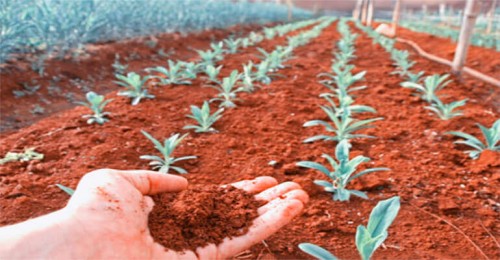Interestingly, the Mars-equivalent soil was better than the Moon soil simulant when it came to growing the plants - providing hope for future agriculture on the Red Planet. Although fans of spinach may miss out.
Researchers used a NASA-developed reproduction of regolith, the loose mix of dirt, dust and other debris found on top of the hard surface of Mars and the Moon. This regolith simulant was mixed with organic material that astronauts would need to bring to an off-world base from Earth, or could be leftover compost from earlier harvests.
In tests on 10 different crops – garden cress, rocket, tomato, radish, rye, quinoa, spinach, chives, pea and leek – the crops all grew well and produced edible parts, with the exception of the spinach.
"We were thrilled when we saw the first tomatoes ever grown on Mars soil simulant turning red," says ecologist Wieger Wamelink, from Wageningen University

If we're going to support ourselves on off-world bases then we're going to need to find a way to grow our own food, and now we've got more than a Matt Damon film to suggest it's possible – experiments run using lookalikes of Moon and Mars soil have successfully produced crops.




